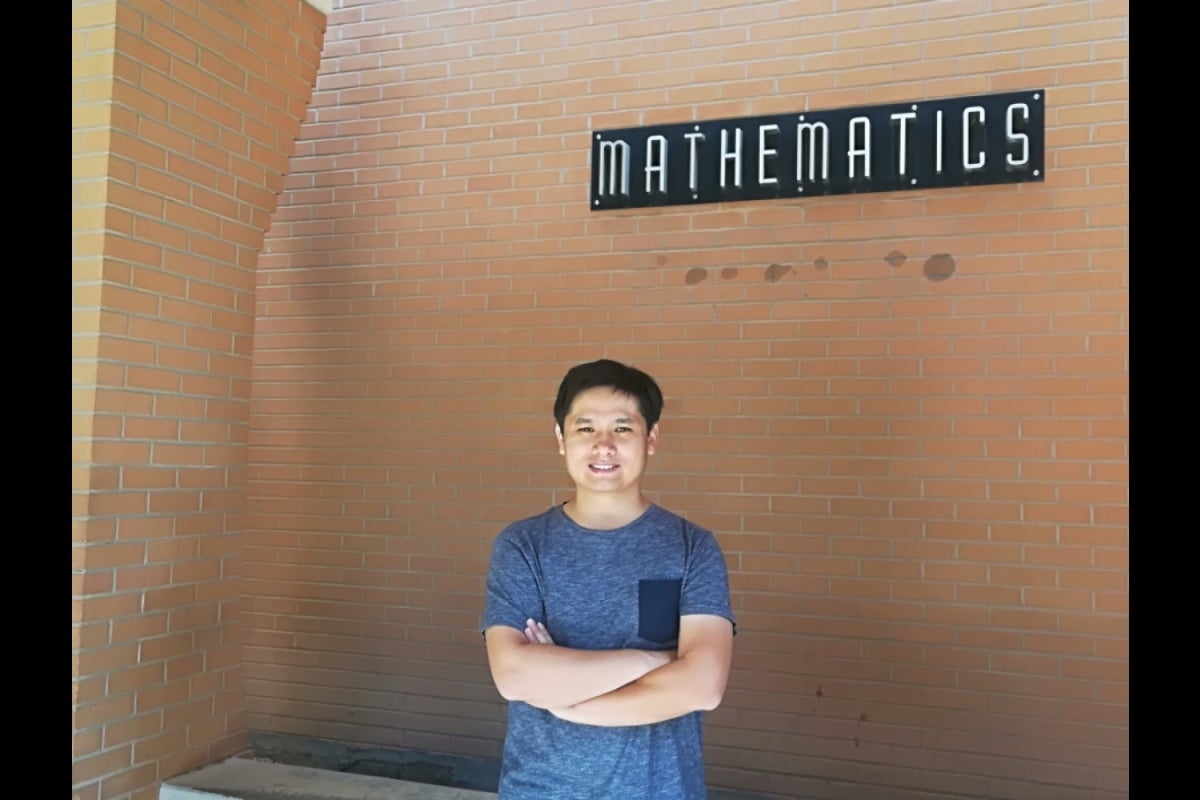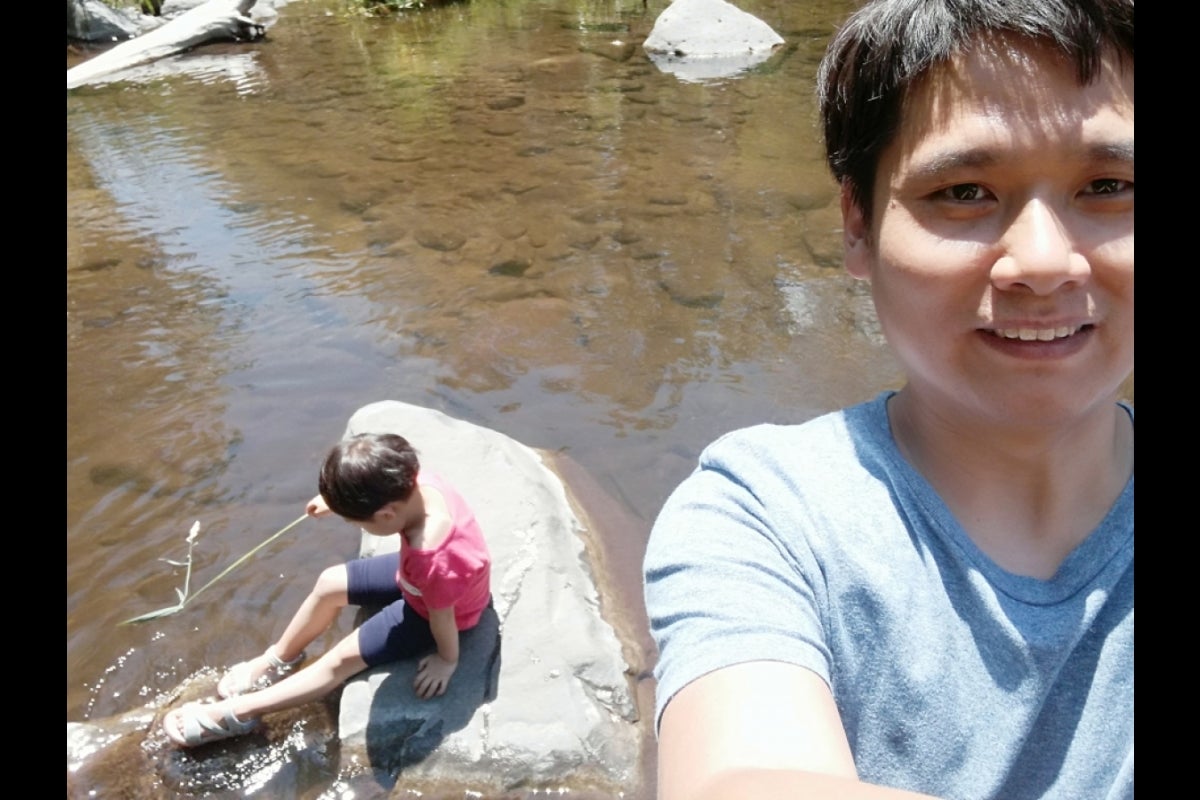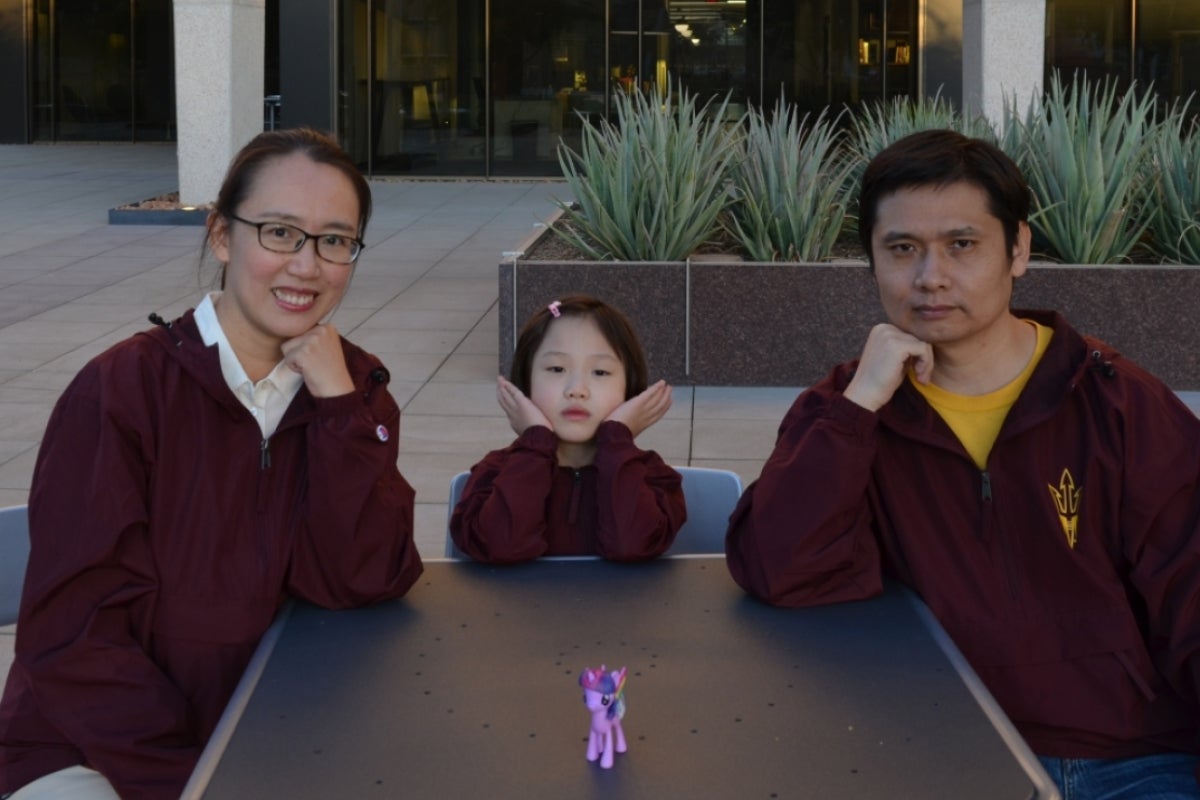PhD grad uses new statistical approach to predict spatial patterns of reef fish species

Xuetao Lu
Editor's note: This story is part of a series of profiles of notable fall 2020 graduates.
This fall, Xuetao Lu graduates with a PhD in statistics from Arizona State University. He successfully defended his dissertation which proposed a novel nonlinear regression model called Gaussian process BART (Bayesian additive regression tree). This model combines the advantages in both BART and Gaussian processes, which makes the model be able to capture the nonlinear effects of both observed and unobservable control variables.
Lu's area of research is spatial statistics, which refers to the application of statistical concepts and methods to data that have a spatial location attached to them, and in which this locational element is used as an important and necessary part of the analysis.
Lu worked with Steve Saul, an assistant professor in the College of Integrative Sciences and Arts, on research studying the effects of the Deepwater Horizon oil spill on the fish population and fishing fleet dynamics in the Gulf of Mexico.
Large portions of the Gulf of Mexico were closed following Deepwater Horizon to minimize oil contamination of fish and seafood products. As a result, many in the fishing industry modified their operations including altering their fishing locations and the species targeted. These changes had a direct effect on the 2010 fisheries data used to assess fish populations and establish annual quotas and catch limits.
"The ability to map the abundance of organisms across space is a critical precursor for many applied research applications that support sustainable environmental resources management," Lu said. "We proposed a generalizable multistage workflow for the nonlinear regression models to predict maps of abundance spatial distribution for reef fish species in the Gulf of Mexico. This workflow can effectively handle zero-inflated sampling data without strong assumptions. The nonlinear prediction has the advantages, high accuracy, low bias and well-performed in multi-resolution. Moreover, high adaptivity of the workflow makes it suitable to variety applications and datasets."
“Xuetao Lu is an early career, transdisciplinary mathematician and statistician, whose application of mathematical and statistical theory contributed a novel, new approach toward understanding and computing the abundance of living marine resources across space and time," Saul said."His research is particularly important given its ability to use sparse, unbalanced, sampling data that contains zero observations in a less biased way.”
Lu's work is part of a larger effort to expand an existing West Florida Shelf simulation model to include more fish species and fishing fleets and increase its simulated range across the Gulf. The expanded model will help researchers predict the spatial patterns of fleets and marine species under various scenarios, including oil spill events.
Lu grew up in the small village of Liugezhuang, about a two-hour drive from Beijing, the capital of China. His parents were both teachers. Early in high school he was fascinated by philosophy, but his strongest subject was physics. Outside of school he liked playing soccer and Chinese chess.
He earned a bachelor's degree in systems engineering from the National University of Defense Technology in Changsha, Hunan, China. After working several years as an assistant project manager for China Nonferrous Metal Industry’s Foreign Engineering and Construction Co., Ltd., he realized that his true interest was in academia.
At age 34, Lu and his wife moved to the United States so he could pursue a master's degree in statistics at West Virginia University. A couple of years later, Lu and his young family traveled west to Tempe, Arizona, where he was offered a teaching assistantship to join the statistics PhD program in the School of Mathematical and Statistical Sciences at Arizona State University. The following spring Lu was honored with the Dennis Young Graduate and Early Scholar Statistics Award, in recognition of his outstanding achievement in graduate studies in statistics.
"It has been a real pleasure to work with Xuetao," said Robert McCulloch, professor of statistics and Lu's adviser. "He is well on his way to having a great career doing cutting edge research in data science."
Lu's future plans include a research position at a university or research institution.
We asked Lu to share a bit more about his doctoral journey as a Sun Devil.
Question: Why did you choose ASU for your graduate studies?
Answer: I chose ASU because it offered me the opportunity to pursue my dreams.
Q: What was your “aha” moment, when you realized you wanted to study statistics?
A: Actually, it's a process rather than a moment. After a small progress in my study, I can know what do I want next.
Q: What do you like most about statistics?
A: Statistics knowledge helps me to become a problem solver in this “big data” age.
Q: What is something you learned while at ASU — in the classroom or otherwise — that surprised you, that changed your perspective?
A: Think big and work hard. As you step up the ladder of progress, you will find out that the impossible has just become a little bit more possible.
Q: Which professor taught you the most important lesson while at ASU?
A: Professors Robert McCulloch and Steven Saul, they taught me how to do research. During my study, Robert always trusted me with his many great ideas and, at the same time, encouraged me to confidently further develop and explore them in my own ways, always while offering invaluable advice. Steven is my co-adviser, as well as a good friend. Four years ago he introduced me to spatial statistics, which was a total new area for me. Without his inspirational guidance, constant support, and patient encouragement, I would not have graduated on time.
Q: What is the best piece of advice you would give to those still in school?
A: Interest is the best teacher. Find the field that you are most interested in, the sooner the better.
Q: What was your favorite spot on campus, whether for studying, meeting friends or just thinking about life?
A: The Noble Library. I think I spent 80% of my time in Noble Library when I was on campus (before the pandemic).
Q: What do you like to do in your spare time for fun?
A: Listening to music, hiking and playing with my five-year-old daughter. Reading story books is her favorite activity. Recently she loves pony stories.
Q: What do you think is most misunderstood about math by the general public?
A: A possible misunderstanding about math by the general public is that they consider math as a set of numbers and formulas. But, actually, math is a language-— the language of the universe. Using math we can then build imaginary systems and model possible behavioral states and properties of real entities, phenomena and objects in the universe.
Q: If someone gave you $40 million to solve one problem on our planet, what would you tackle?
A: Although the budget is far more than enough, the problem that I want to tackle is the threat of artificial intelligence (AI). The AI research is now progressing rapidly. As Stephen Hawking said, "There are no fundamental limits to what can be achieved. Whereas the short-term impact of AI depends on who controls it, the long-term impact depends on whether it can be controlled at all." I totally agree with Hawking. For AI, humans have to find ways to improve the chances of reaping the benefits and avoiding the risks.
More Science and technology

Will this antibiotic work? ASU scientists develop rapid bacterial tests
Bacteria multiply at an astonishing rate, sometimes doubling in number in under four minutes. Imagine a doctor faced with a…

ASU researcher part of team discovering ways to fight drug-resistant bacteria
A new study published in the Science Advances journal featuring Arizona State University researchers has found…

ASU student researchers get early, hands-on experience in engineering research
Using computer science to aid endangered species reintroduction, enhance software engineering education and improve semiconductor…




